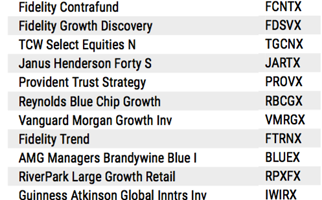
Maybe you’ve wondered why ticker symbols for all traditional mutual funds end with the same letter — the letter "X." I certainly have, so I decided to do some research.
Here’s what I found out. Ticker symbols, created in the late 1860s by Standard & Poors, were developed to speed communication. After all, why spell out the railroad-company name "Atchison, Topeka, and Santa Fe" when you could simply use the letter "A"?
("Ticker," by the way, comes from "tick," which describes any up or down movement in the price of a security. Back in the day, a ticker tape machine — invented by Edward Calahan and improved by Thomas Edison — recorded these price movements.)
Today, most stocks have a ticker symbol of one-to-four letters — such as C for Citigroup, KR for Kroger, MMM for 3M, and AAPL for Apple. Companies choose their own tickers, but the symbols must be approved under a system known as the National Market System Plan (PDF), which sets "a uniform system for the selection and reservation of securities symbols." (Sometimes approval is denied. In 1992, a company unsuccessfully applied for the ticker FBI.)
Until a few years ago, stocks listed on either the New York Stock Exchange or the American Stock Exchange couldn’t have tickers longer than three letters, while companies listed on the NASDAQ had to have four. That distinction was eliminated in 2007.
As for exchange-traded funds (ETFs), they typically choose three- or four-letter tickers, such as SPY (SPDR S&P 500 Trust) and VXUS (Vanguard Total International Stock).
X marks the fund
In contrast, a ticker symbol for a traditional open-end mutual fund must contain five letters. The first four may be in any combination, but the final letter must be an "X." (A ending of double-X indicates a money market fund.)
So, what does the "X" stand for? Nothing in particular. It simply provides an arbitrary but uniform way to clearly designate certain tickers as representing mutual funds, much in the same way that most radio and TV stations east of the Mississippi River are required to have call letters that begin with a "W."
As to why the letter "X" was chosen as the final character for mutual fund tickers (as opposed to some other arbitrary letter), I couldn’t find an answer. Perhaps it’s because only 47 (or perhaps 50) five-letter English-language words end with an "X."
Many mutual fund tickers face one other requirement. If a fund company offers multiple classes of the same fund — such as a retail class and institutional class — the ticker symbol must relay the class information in the third or fourth character. So, for example, the retail class of the Fidelity Contrafund is FCNTX, while the institutional class (i.e., available via company retirement plans) is FCNKX.
Now you know!







